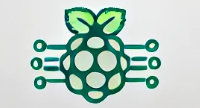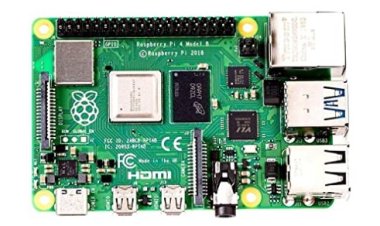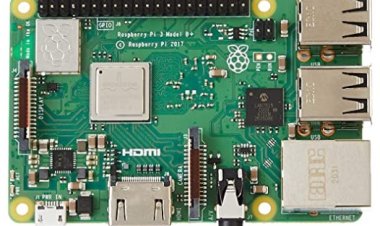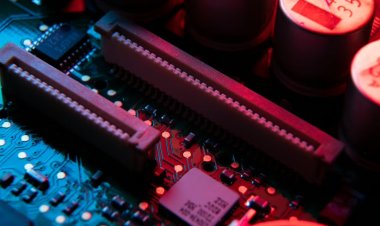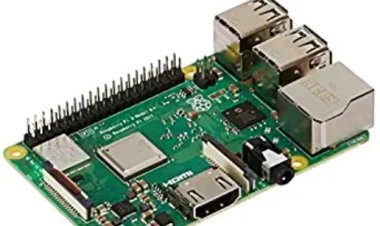Raspberry Pi Data Science
Discover how Raspberry Pi data science becomes your trusted companion in data science.
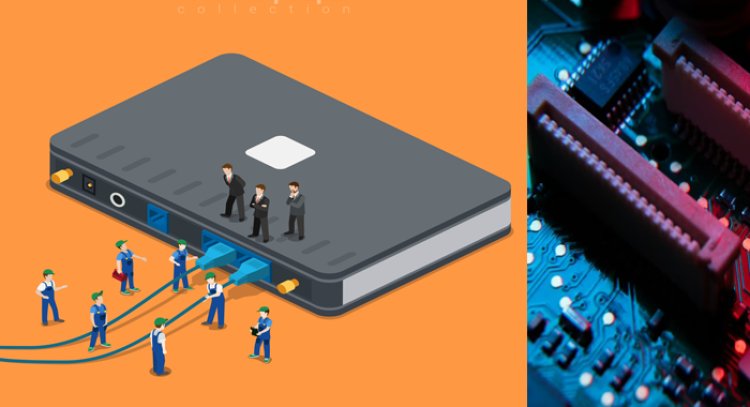
Introduction to Data Science and Raspberry Pi
Data science is a captivating interdisciplinary domain, weaving together mathematics, statistics, computer science, and an array of other disciplines to decipher and glean meaning from data. It revolves around the deployment of algorithms, techniques, and methodologies for the extraction of valuable insights from data. This versatile field finds application across diverse sectors, be it in businesses, government institutions, or academic research.
Enter the Raspberry Pi, a diminutive, budget-friendly computer explicitly tailored for educational purposes and experimentation. Conceived by the Raspberry Pi Foundation in the United Kingdom, its primary objective was to democratize access to computing. The Raspberry Pi possesses immense potential for diverse projects, including those in the realm of data science.
Embarking on a data science journey with a Raspberry Pi entails the collection, organization, and analysis of data from various sources. It can be harnessed to construct models, craft visualizations, and even forge machine learning algorithms. What makes the Raspberry Pi particularly enticing for data scientists is its cost-effectiveness, user-friendly interface, and versatility across a spectrum of projects.
This dynamic combination of data science and the Raspberry Pi empowers users to craft applications encompassing predictive analytics, machine learning algorithms, and data visualizations. Armed with a Raspberry Pi, data scientists can gather data from multifarious origins, sanitize and prep it for analysis, and subsequently employ a diverse set of techniques to unearth meaningful insights. Additionally, the Raspberry Pi can be leveraged to design applications and projects that are deployable online or in the cloud.
Data science on a Raspberry Pi serves as an exceptional gateway into the world of data science. It offers an affordable and accessible platform for learning and experimentation, facilitating the acquisition of the essential skills requisite for a successful data scientist. With the Raspberry Pi, one can create practical projects that address real-world issues and unearth hidden insights concealed within data.
Setting Up Your Raspberry Pi for Data Science
The Raspberry Pi's compact form factor and cost-effectiveness have made it a popular choice among data scientists. It provides the capability to run data analysis, applications, and programs that may strain your personal computer. While the Raspberry Pi is versatile for various applications, configuring it for data science can be challenging. Here's a guide to help you set up your Raspberry Pi for data science.
- Choose the Right Raspberry Pi Model: To accommodate your data science applications, it's crucial to select a Raspberry Pi with sufficient RAM and storage. The Raspberry Pi 4, the latest release, offers more substantial RAM and storage compared to its predecessors.
- Install an Operating System: Raspberry Pi supports various operating systems like Raspbian and Ubuntu. Your choice depends on the specific tasks for your data science projects.
- Install Essential Packages and Software: Raspbian and Ubuntu come with package managers that simplify the installation of crucial software for data science. These packages include Python, libraries, and essential tools for your projects.
- Configure Your Raspberry Pi: There are several methods to configure your Raspberry Pi for data science. You can use the Raspberry Pi Configuration Screen or the raspi-config tool to automate the setup for data science tasks.
- Install a Data Science Integrated Development Environment (IDE): After setting up your Raspberry Pi, installing a data science IDE like Jupyter or RStudio is crucial. These IDEs allow you to write code and visualize results conveniently through a web browser.
- Establish External Connections: To enhance your data sources, your Raspberry Pi can connect to external data resources. This may include databases or cloud services, which are invaluable for comprehensive data analysis.
By following these steps, you'll be well-equipped to configure your Raspberry Pi for data science. The Raspberry Pi is a versatile and powerful platform for executing data science tasks. With the right setup, you can harness its potential to create impactful applications and programs that drive your data science endeavors.
Basic Data Science Concepts
Data science, an interdisciplinary field, leverages scientific methods to extract valuable knowledge from data. It has gained prominence due to advances in computing technology, finding applications in various sectors like healthcare, banking, and retail. Five fundamental concepts form the core of data science:
- Data Cleaning: This step involves refining raw data, removing irrelevant or erroneous elements, reducing errors, and enhancing result accuracy.
- Data Visualization: Visual tools such as charts and graphs help data scientists explore data swiftly and communicate findings effectively.
- Machine Learning: Algorithms uncover patterns and correlations within data, aiding variable categorization and revealing concealed insights.
- Predictive Analytics: Analyzing data to forecast future events, behaviors, and trends, with applications ranging from customer identification to product recommendations.
- Statistical Analysis: Mathematical models unveil hidden data patterns and correlations, providing valuable insights.
Data science is a powerful tool for maximizing data potential. Understanding these concepts enables you to unlock data's latent power and drive business forward.
Data Acquisition and Storage with Raspberry Pi
Step 1: Data Acquisition Data acquisition is a fundamental aspect of data-related projects, and the Raspberry Pi excels in this domain. To achieve data acquisition on the Raspberry Pi, the GPIO (General Purpose Input/Output) library proves invaluable. This library is a set of programs and utilities that grant access to the GPIO pins on the Raspberry Pi, enabling you to interface with a wide range of sensors and devices. As an example, consider connecting a temperature sensor to the Raspberry Pi, where you can monitor temperature readings and even log this data into files or send it to a database for further analysis.
Step 2: Alternative Data Acquisition Methods While GPIO is a powerful tool, it's not the only method available for data acquisition on the Raspberry Pi. The beauty of this platform is its versatility, and it accommodates various other data acquisition methods. Many devices are designed to connect directly to the Raspberry Pi's USB port, expanding the possibilities for data gathering. Devices like barcode scanners and RFID readers can be seamlessly integrated, broadening the scope of data sources and applications.
Step 3: Data Storage Data storage is another critical component of data-related projects, and the Raspberry Pi offers cost-effective solutions in this area as well. Its affordability makes it easy to augment with external storage devices such as external hard drives. With this added storage capacity, you can store data in diverse formats, including text files, images, and videos, depending on the needs of your project.
Exploratory Data Analysis (EDA)
Exploratory Data Analysis (EDA) is a crucial process for data professionals. It encompasses the examination of data, identification of patterns, and formulation of hypotheses through various visualizations, such as histograms and box plots. EDA begins with a focus on data quality checks, rectifying errors, ensuring data completeness, and addressing any outliers that might impact the analysis.
Visualizations play a pivotal role in deepening one's understanding of the data. They unveil trends, highlight outliers, and expose correlations that might otherwise remain hidden. To enhance comprehension, statistical tests like ANOVA are employed to assess differences among data groups.
The final stage of EDA ventures into data mining and machine learning. These techniques uncover hidden patterns, predict emerging trends, and contribute to more precise decision-making. EDA empowers data professionals to gain valuable insights and make informed, data-driven decisions that can have a significant impact on various domains and industries.
Machine Learning with Raspberry Pi
Artificial Intelligence (AI) and Machine Learning (ML) have sparked a revolution in diverse industries, from predicting stock market trends to automating factory processes. The integration of ML into hardware devices like the Raspberry Pi has been a game-changer, enabling even more efficient automation.
The Raspberry Pi, a credit card-sized, powerful computer, is both beginner-friendly and cost-effective, making it an appealing platform for ML. As a result, ML is gaining popularity on the Raspberry Pi, with applications in various domains:
- Facial Recognition: Raspberry Pi is harnessed for facial recognition, allowing developers to achieve accurate identification with ML algorithms. This enhances efficiency and accuracy in recognizing individuals.
- Object Detection: ML and Raspberry Pi work together for precise object detection in images and videos. This synergy simplifies the process of identifying and locating objects.
- Speech Recognition: ML algorithms facilitate voice commands for interacting with machines and devices. Raspberry Pi provides an efficient platform for enhancing speech recognition capabilities.
In conclusion, the collaboration between ML and Raspberry Pi spans numerous applications, optimizing processes. With its affordability and accessibility, Raspberry Pi is an excellent choice for developers and AI researchers, revolutionizing technology use and expanding the possibilities of machines and devices.
Deep Learning and Neural Networks
Deep learning and neural networks, integral to artificial intelligence, involve using interconnected nodes to process data and learn without explicit programming. They're employed in diverse applications, enhancing tasks like image recognition and language processing. By discerning patterns in vast datasets, these technologies enable rapid learning and automation of decisions, reducing the need for human intervention.
In medical diagnostics, neural networks are invaluable for swift and accurate disease diagnosis. They recognize patterns in medical data, aiding early detection of health issues.
The potential of deep learning and neural networks is vast, expected to automate tasks like customer support and stock price prediction. However, as these technologies proliferate, ethical considerations are paramount. Responsible and ethical use is crucial as they become more prevalent in various fields.
